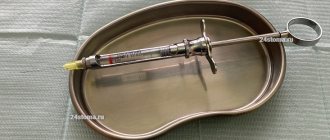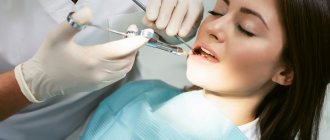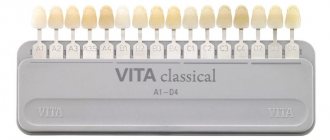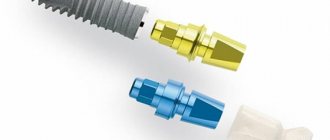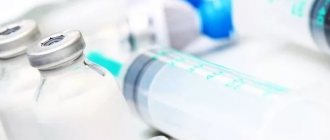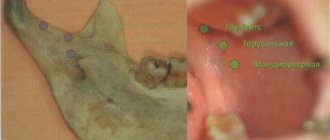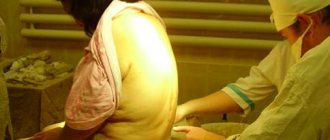What is carpule anesthesia?
Carpule anesthesia in dentistry is an injection anesthesia using a special syringe, which is called a carpule.
The use of a carpule syringe increases the safety and comfort of anesthesia.
That is, carpule anesthesia in dentistry can be of any type - the main thing is that a carpule syringe and the carpule itself with an anesthetic are used.
Carpule syringes: types and device
The instrument consists of a body, a plunger that moves up and down, and a needle changer. There is a small hole on the side of the device into which a capsule with anesthetic is inserted.
There are types of devices that differ according to the following criteria:
- Frequency of use: disposable and reusable syringe.
- Material of manufacture: plastic, metal.
- Possibility of placement in the dentist's hand. Ease of holding is one of the important qualities of the instrument, which determines the comfort and speed of procedures. In medical equipment stores you can find syringes with rings and straight handles. The number of rings can vary from one (designed for the thumb) to three (supporting the thumb, index and middle fingers). Ring-shaped clamps are able to provide a more comfortable and immovable fastening of the device in the hand, which is why they are more in demand.
- Size of rings for fixation. It is important here that the dentist can choose the size that is more comfortable for him, since the convenience of holding the syringe in his hand and the effectiveness of the procedure depend on this.
Reusable
The carpule syringe in dentistry is found in the form of a reusable instrument made from the following materials:
- titanium;
- brass;
- stainless steel;
- high quality plastic.
Features of the use of tools are:
- There is a need for sterilization.
- No guarantee of quality processing.
- There is a small risk of infection (according to statistics, there is 1 infection per 90 procedures).
- There is a need to disassemble, fold, clean and disinfect the syringe.
- Increased time spent on tool processing and cleaning.
- There is a small chance of a negative aspiration test.
- No guarantee of safety, reliability, or risk of injury.
- More expensive anesthesia.
- Only foreign-made syringes are available for sale.
Disposable
Today, plastic disposable instruments are available for sale.
Features of product use include:
- No need to sterilize instruments.
- There is 100% protection against cross-infection between the dentist and the patient.
- There is no unnecessary manipulation of sterilization or disassembly, which reduces procedure time.
- The products have a lower cost of anesthesia.
- The procedure meets current standards in dentistry.
- Obtain an aspiration sample during each local anesthesia procedure.
- Safety and reliability of the method.
Equipment
Essentially, a carpule syringe is a metal dental anesthesia syringe that can be used many times and is sterilized in the same way as other dental instruments. A carpule with an anesthetic is inserted into the carpule syringe - a special glass cartridge, factory-made.
Currently, the Trilogy Medical and Dental Center uses carpule syringes for injection anesthesia - they are much more convenient and more sophisticated than conventional disposable syringes.
Features of choice
Whatever carpule syringe you choose, remember that it must meet several important criteria:
- Have a replaceable nipple tip that allows you to screw in needles from different companies;
- Be comfortable, aesthetic and completely fearless;
- Have increased strength, allowing you to administer an anesthetic drug under high pressure;
- Easy to use with one hand;
- Suitable for performing an aspiration test to prevent accidental injection of anesthetic into blood vessels.
And one moment! To reassure the youngest patients, it is better to use special multi-colored attachments on the carpule syringe. They hide the device and turn treatment into an exciting game.
Advantages of carpule pain relief
The most important advantages of carpulal anesthesia can be considered:
- The exact amount of the drug in 1 ampoule is exactly 1.7 ml. Thanks to this, the doctor can count the carpules and know exactly the dosage of the administered drug.
- Complete sterility. Carpules are manufactured and sealed in a warehouse under completely sterile conditions. This way you can be sure of the quality of the injected drug.
- Less pain from the injection itself. Patients feel less pain when punctured because the needle of a carpule syringe is much thinner and more flexible than that of a regular syringe.
- It is more convenient for the doctor to control the process. The dental anesthesia carpule syringe fits very comfortably in the hand thanks to special handles and stops. Also due to the greater flexibility of the needle, it can be bent in almost any direction without fear of it breaking off.
- Elimination of errors. When using Carpules, the possibility that the doctor will administer the wrong drug or in the wrong quantity or concentration is completely eliminated. After all, with carpule anesthesia, the doctor always knows exactly what he is injecting - the name of the drug, its concentration and quantity is written on each carpule.
Advantages and safety of carpule anesthesia in dentistry
Experts choose this method of pain relief due to the following advantages:
- Possibility of error-free dosing of the medicinal substance. The advantage is provided by the design of the syringe, which provides space for a 2 ml carpule (due to the cartridge plug, the figure can be reduced to 1.7 ml), facilitating the administration of the required dose.
- Ensuring the sterility of local anesthesia procedures. The syringe provides for the installation of disposable needles (for each patient individually). The medicine in the carpool is hermetically sealed and meets the requirements of disinfection.
- Guarantee ease of use and good patient tolerance. The needle intended for the device is thinner when compared to the tip of a conventional syringe. When a needle is inserted into the gum, a person feels almost no discomfort.
- Providing comfortable manipulations that facilitate the doctor’s work. The tool is lightweight and more flexible when redirecting it from side to side than similar devices. This advantage is achieved thanks to a well-thought-out structure: the carpule needle is characterized by increased flexibility, which makes it possible to bend it without fear of breaking or damage.
- Eliminating the possibility of erroneous injection of another substance. In dental medical practice, cases have been recorded when other solutions were introduced instead of those needed. This method of anesthesia eliminates all risks of such phenomena, since each cartridge is marked with the marking of the product, its saturation and quantity.
Disadvantages of carpule anesthesia
Despite the minor disadvantages described below, carpule anesthesia in dentistry is currently considered the safest and most modern option for injecting an anesthetic.
- Higher price of equipment.
Carpule syringes are more expensive per unit than disposable syringes. This is due to the fact that syringes with carpules for anesthesia in dentistry are quite complex in design, plus really high-quality ones will cost more than simpler options.
- It is impossible to change the concentration of anesthetic inside the cartridge - the cartridge is completely sealed and it is not possible to add anything inside.
How to install the carpool?
In dentistry, a carpule syringe is used in combination with cartridges (sealed containers with an anesthetic substance). To install a capsule in a syringe, you need to know the distinctive characteristics of its structure.
Based on the method of fixing the cartridge, products can be divided into 3 types:
- Spring. With this design, the capsule can be placed in the syringe only after tensioning a special spring, which clamps it in the desired position.
- Block-shaped. Such a lock implies the need for retraction at an angle at the back of the syringe. Then you should put the carpule in place and return the movable part of the device to its original position.
- Bayonet. The fixation method is based on axial movement, turning the capsule and syringe touching each other when installed in the intended location.
The spring and block fastening is quite durable during operation. The bayonet installation method is less thorough and durable with frequent use.
Conditions that local anesthetics must adhere to
In general, local anesthetics should:
- Do not cause allergies
- Have minimal toxicity to the body
- Have few side effects
- Easy to dissolve and excrete
In addition to this, anesthetic agents are required to:
- The effect is strong enough to completely anesthetize the tooth and surrounding tissues.
- Rapid numbness - no more than 5 minutes after the injection
- The numbness should last at least an hour - so that it is enough for the entire procedure, including the very last manipulations
- Anesthesia should take place no more than 2-3 hours later.
- Long-term stability of the drug itself – at least 2–3 years
Where to buy quality syringes?
The carpule syringe is a popular tool in dentistry. You can purchase quality products from time-tested sellers. If a company has been on the market for 3 years or more, then this indicates an already established reputation that can be verified.
You can buy medical instruments in the following places:
- in stores selling medical equipment;
- on the Internet on relevant trading platforms;
- in large pharmacy chains.
The best anesthetic – does it exist?
As we said above, almost all modern anesthetics are made on the basis of articaine, so there is not such a fundamental difference between them. Most patients are anesthetized with Ultracaine or Ubestezin.
But we must also take into account that, of course, it is important what is injected, but it is also important how it is done - a lot depends on the doctor and the technique of performing anesthesia.
Indications, contraindications and consequences of carpules anesthesia depend more on the type of anesthesia - infiltration or conduction, than specifically on the carpules. But, as we noted earlier, with carpule anesthesia there is no risk of administering the wrong drug and there is virtually no risk of the needle breaking off.
Injector processing
Metal injectors (syringes) immediately before and after procedures are wiped with sterile cotton balls, which are moistened in 70% alcohol.
At the end of the doctor’s work shift, the device is processed according to the algorithm:
- Disinfection.
- Pre-sterilization cleaning.
- Sterilization.
If the cartridge is not completely used, then it is prohibited to reuse it (even when connecting another needle).
When using a disposable syringe, there is no need to sterilize it, since it comes in special packaging that guarantees 100% protection against infection.
In dentistry, metal carpule syringes must be kept in sterilizers, also disinfected, cleaned, disassembled and assembled. Processing of the injector may take up to 30 minutes.
